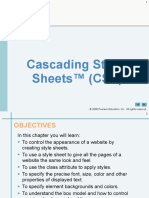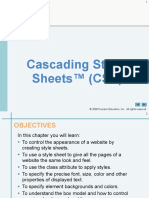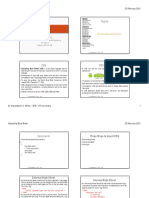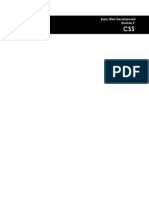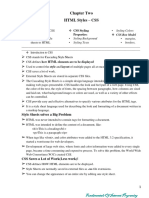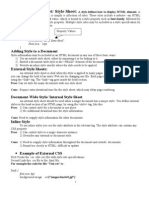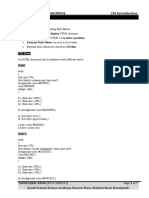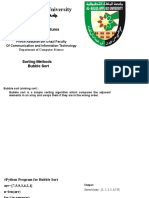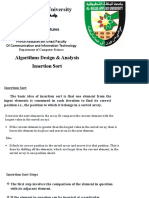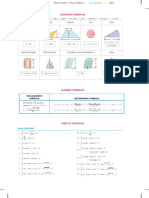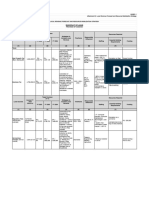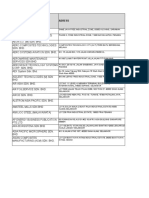0% found this document useful (0 votes)
72 views30 pagesWebdev Ch02 Css
This document discusses different methods for styling web pages using CSS, including inline styles, internal style sheets, and external style sheets. It explains that inline styles apply only to individual elements, internal style sheets can style all elements of a type within a page, and external style sheets are best for controlling styles across many pages of a site. The document also covers CSS syntax, including using IDs to select unique elements and classes to select groups of elements.
Uploaded by
mervat anwarCopyright
© © All Rights Reserved
We take content rights seriously. If you suspect this is your content, claim it here.
Available Formats
Download as PDF, TXT or read online on Scribd
0% found this document useful (0 votes)
72 views30 pagesWebdev Ch02 Css
This document discusses different methods for styling web pages using CSS, including inline styles, internal style sheets, and external style sheets. It explains that inline styles apply only to individual elements, internal style sheets can style all elements of a type within a page, and external style sheets are best for controlling styles across many pages of a site. The document also covers CSS syntax, including using IDs to select unique elements and classes to select groups of elements.
Uploaded by
mervat anwarCopyright
© © All Rights Reserved
We take content rights seriously. If you suspect this is your content, claim it here.
Available Formats
Download as PDF, TXT or read online on Scribd
/ 30







